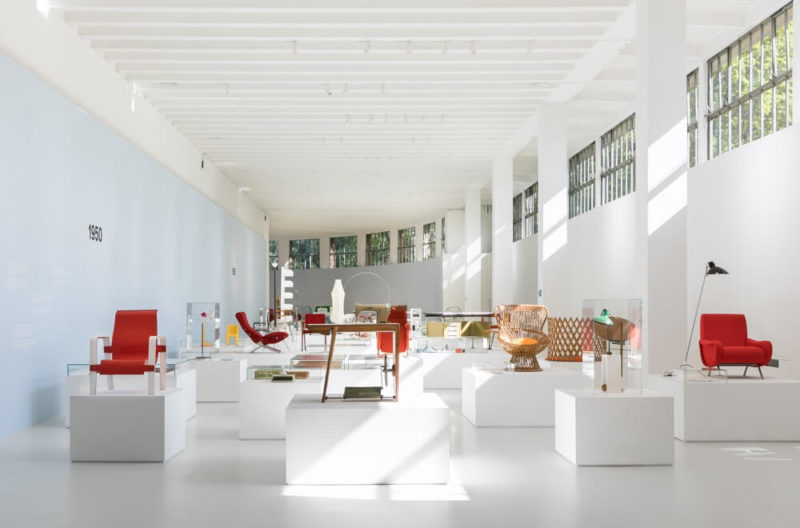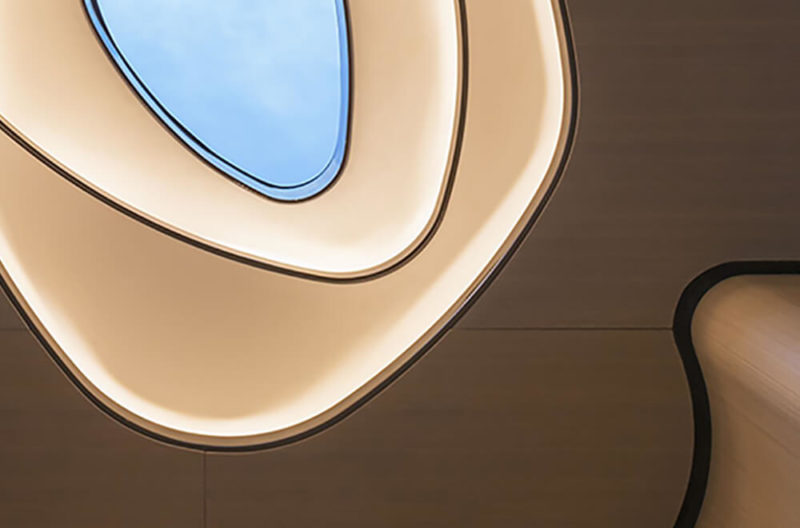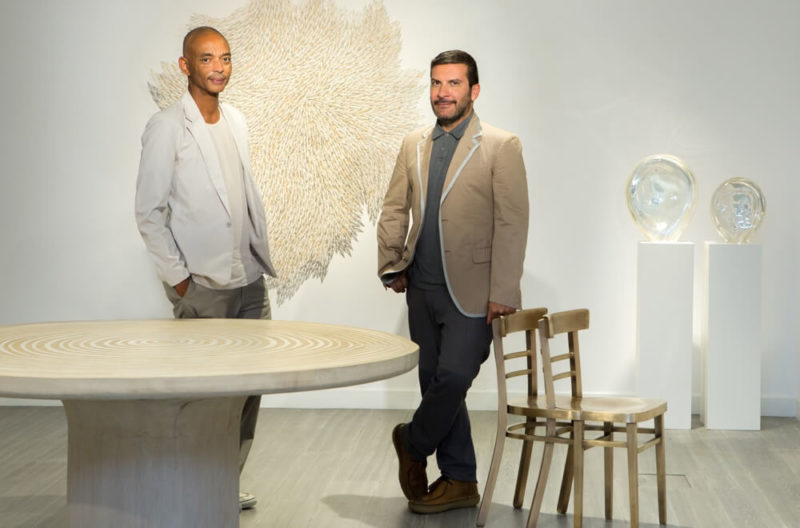Raro London
After two decades of building up a talented team of Indian master craftsmen, whilst honing their own creative vision, Rajeeta and Rolly Gupta launched their design atelier in London last year.
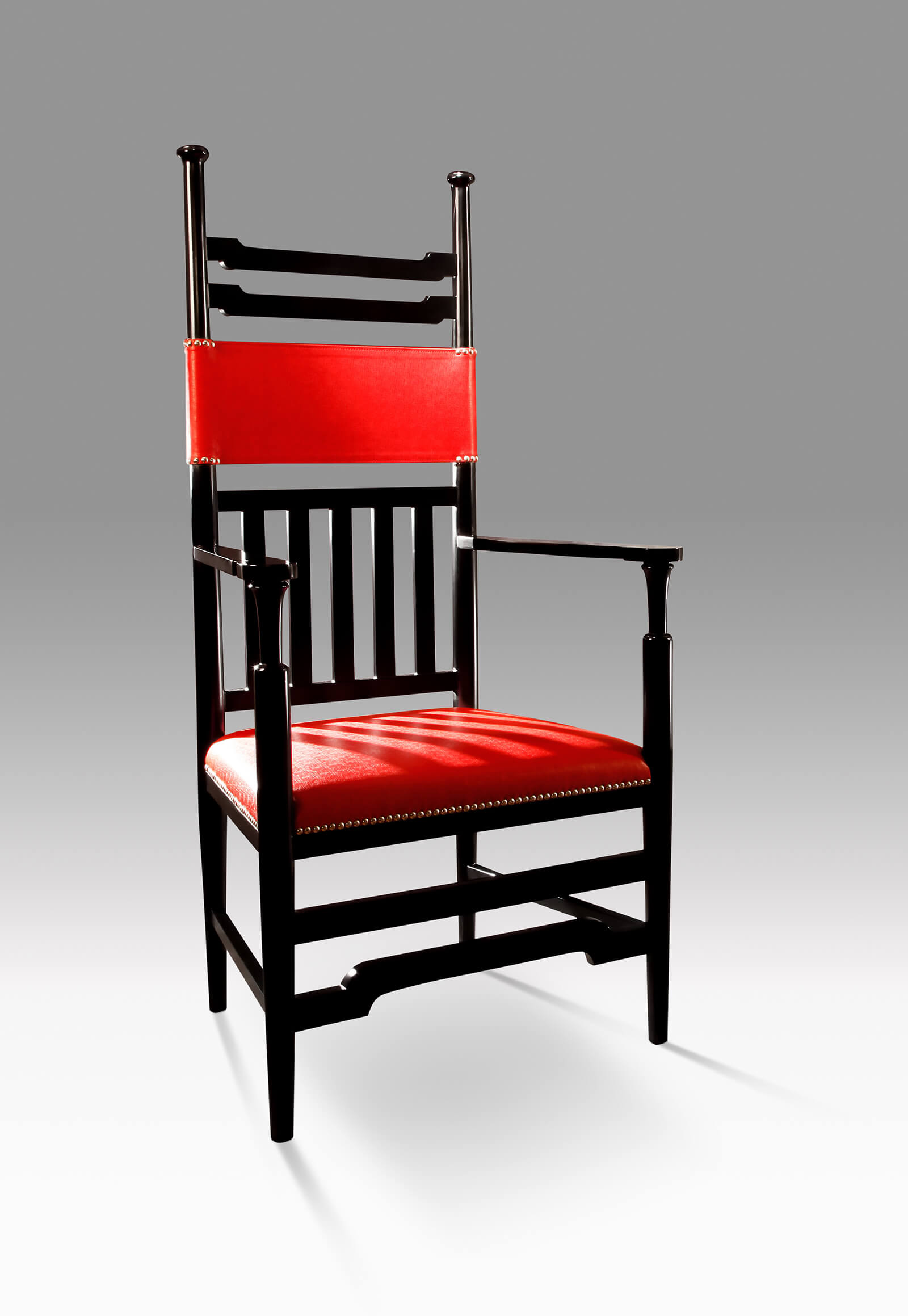
Raro, ‘Masai’ chair, 2018
COURTESY: Raro London
WITH DIWALI FAST approaching (27th October), it seems timely to throw the spotlight on sisters Rajeeta and Rolly Gupta who have brought their own unique design concept from Delhi to London. Raro London is located in a discreet salon on St James’s Square where visitors (by appointment) can encounter design that is eye-popping in terms of craftsmanship, the materials used and the detailing. Take, for example, the ‘Shatranj’ table of bison horn marquetry with silver inlays, complemented by chess pieces of hand-cut English crystal; the ‘Nawab’ chest cased in black python leather with a Mughal-style, jewelled falcon handle in 18ct gold with uncut diamonds set in 24 ct gold; or the ‘Imperial’ console, cased in embossed hornback leather with rose gold leafing, complemented by carved ebony, lion’s head supports with eyes and tongue in African ruby. These pieces are available to order in very limited editions.
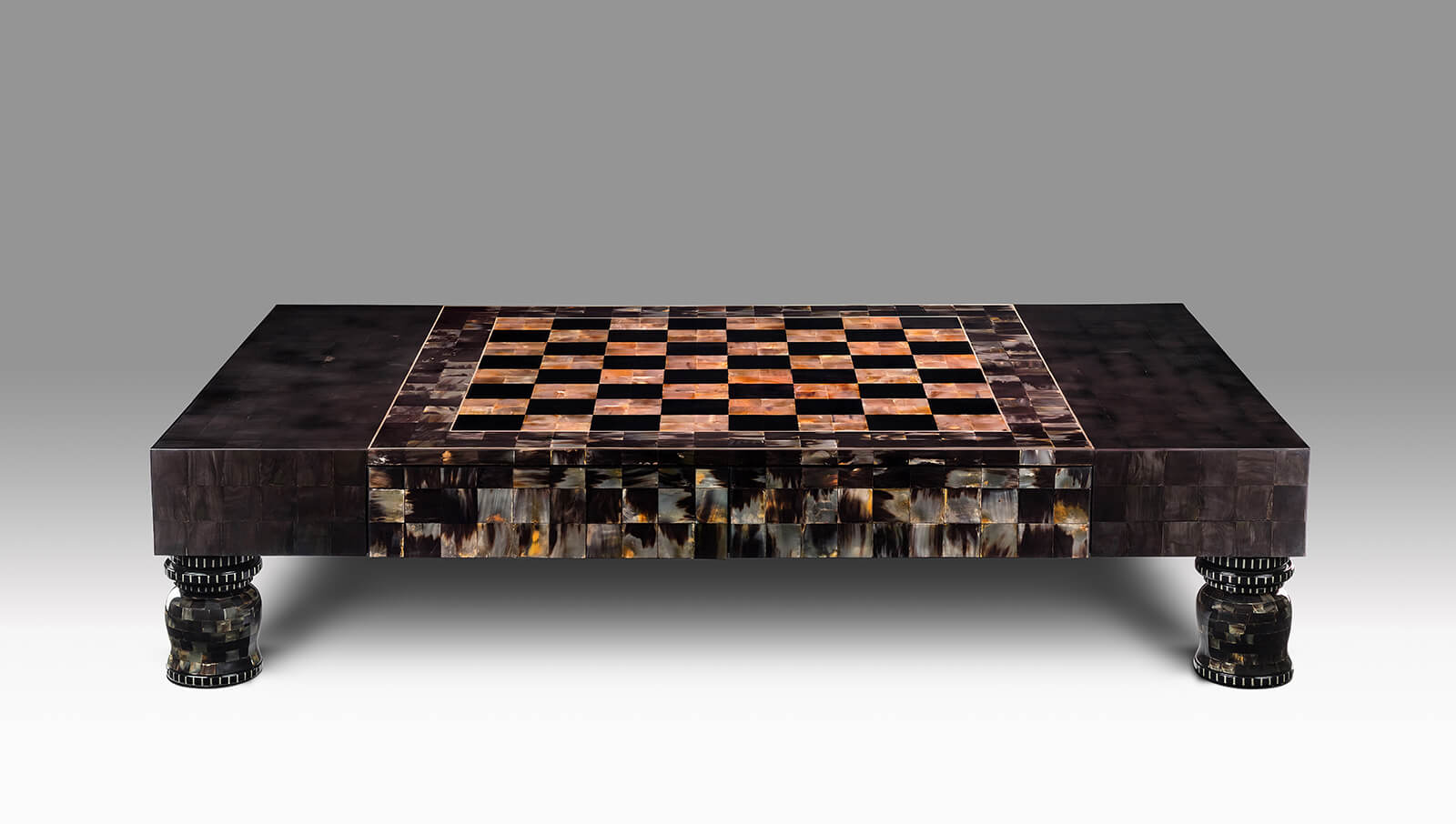
Raro, ‘Shatranj’ table, 2009/2019
COURTESY: Raro London
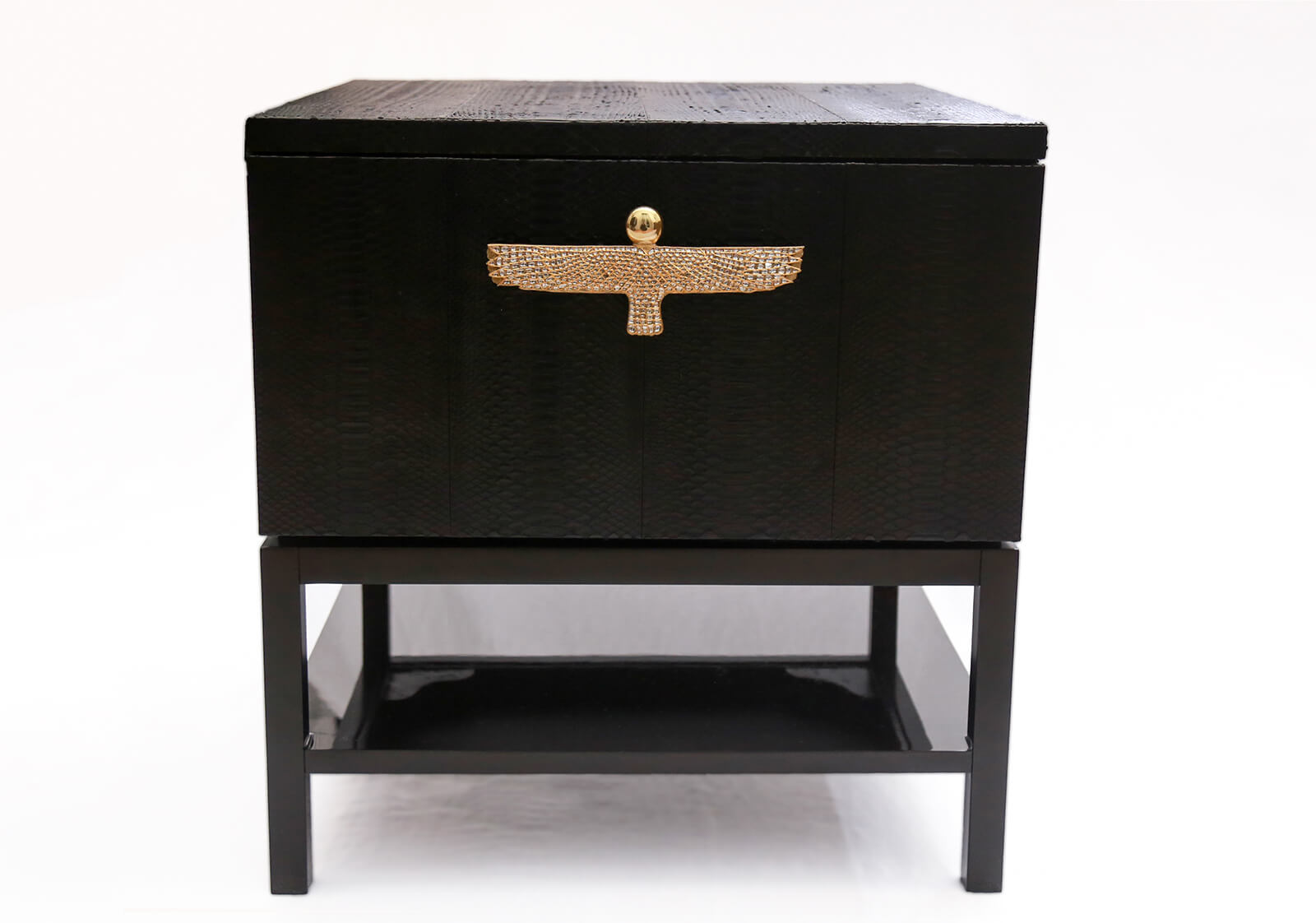
Raro, ‘Nawab’ chest, 2018
COURTESY: Raro London
They are far from shrinking-violets of contemporary design. But what marks them out apart from their obvious opulence is that they embody a 21st-century aesthetic that also references the grandeur of the Mughal Empire, as well as the patronage of the 19th and 20th century Maharajas from which luxurious houses such as Cartier and Fabergé benefited so profitably. India has so far made no visible footprint on the international collectible design scene. Raro is either a fore-runner of things to come, or a very interesting cul-de-sac.
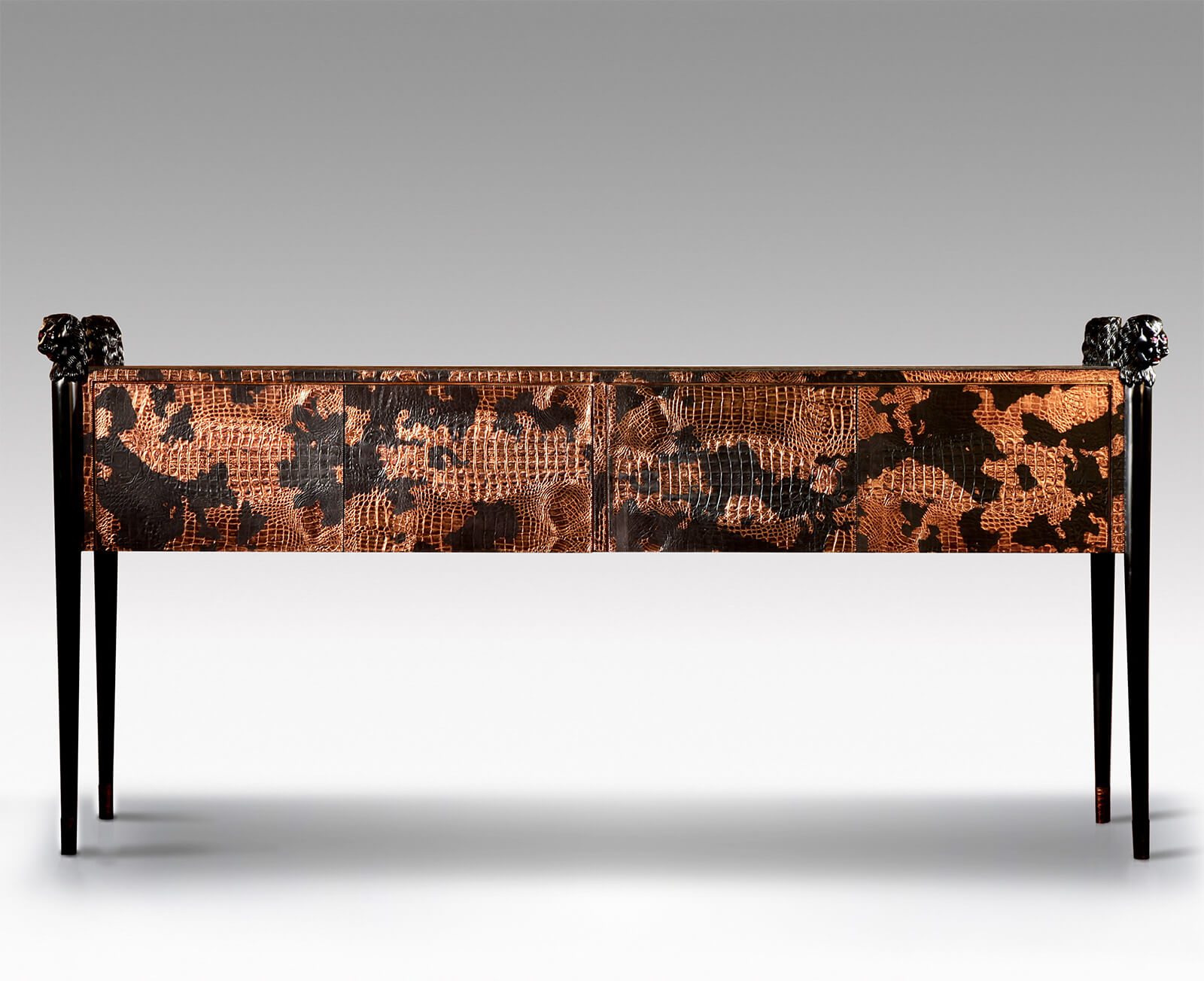
Raro, ‘Imperial Hornback’ console, 2011
COURTESY: Raro London
Every piece is designed collaboratively by Rolly and Rajeeta (Raro being an amalgamation of their names), made to exacting requirements in their own atelier in their home city of Delhi. While they are the new kids on the block in terms of London’s burgeoning, collectible design scene, Raro London is in fact an off-spin of the House of Raro brand they launched twenty-two years ago, when Rajeeta kicked against pressure from her family to marry: “Rolly and I are the two youngest of an extended family of fourteen children, and our parents wanted me to marry at nineteen – as my cousins had done. I argued against that and in the end they allowed me to study for a diploma in interior design at the American College in London for a couple of years. That freed Rolly up, as, being younger than me, she was not expected to marry until I was, so she studied for a fashion diploma at the Pearl Academy of Fashion in Delhi, where she specialised in couture garments that involved importing textiles from Paris and embellishing them lavishly with embroidery and ornamentation. It seemed obvious to put our creative vision together, so we decided to focus on designing fine furniture.”
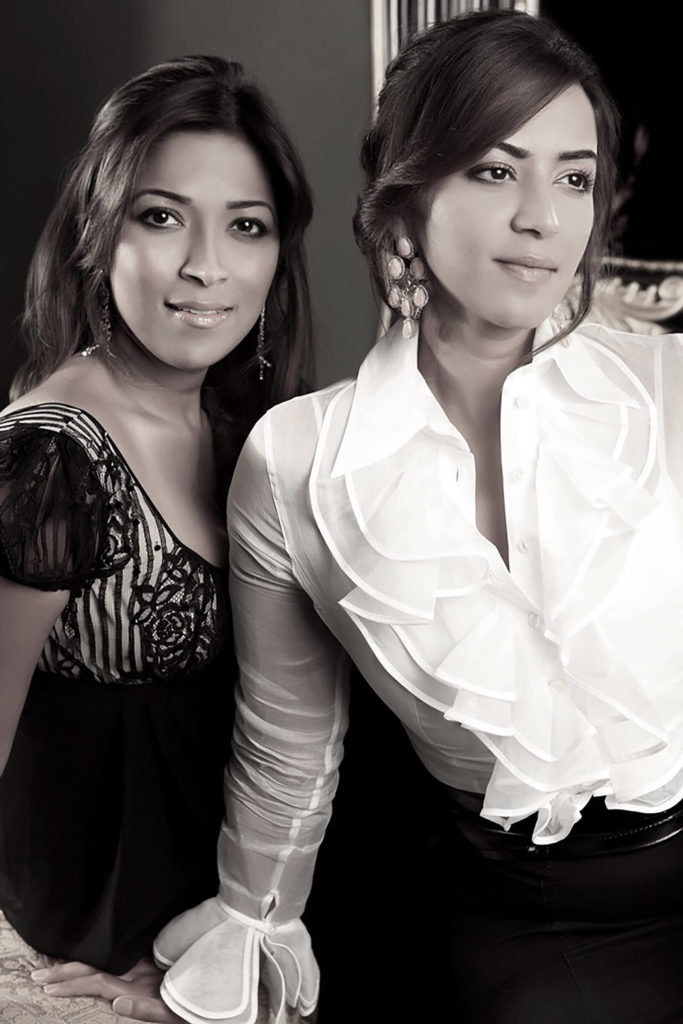
Rajeeta and Rolly Gupta, founders of Raro
COURTESY: Raro London
Rolly takes up the story, “We had the aesthetic sense, but first we had to study the construction of furniture, which we could only do in India by poring over international design magazines and auction catalogues. We wanted it to be made to the same rigorous standards as you find in the great country houses of England, or the palaces of France. The real problem is that in India, furniture is not made to very refined standards because there is no history of furniture design – a cabriole leg, for example, is likely to be made from four pieces of wood glued together, rather than being carved from a solid piece of wood.” The Guptas resolved this problem when they had a chance encounter with a Muslim craftsman, Gulzar Mir, who could achieve the quality of finish to which they were aspiring. “Muslims tend to be the best craftspeople in India, with skills handed down over many generations from Mughal times,” says Rolly. “With Gulzar’s help, we built up a workforce of talented artisans and then persuaded our parents to give us their garage to work from – that was our first studio.”
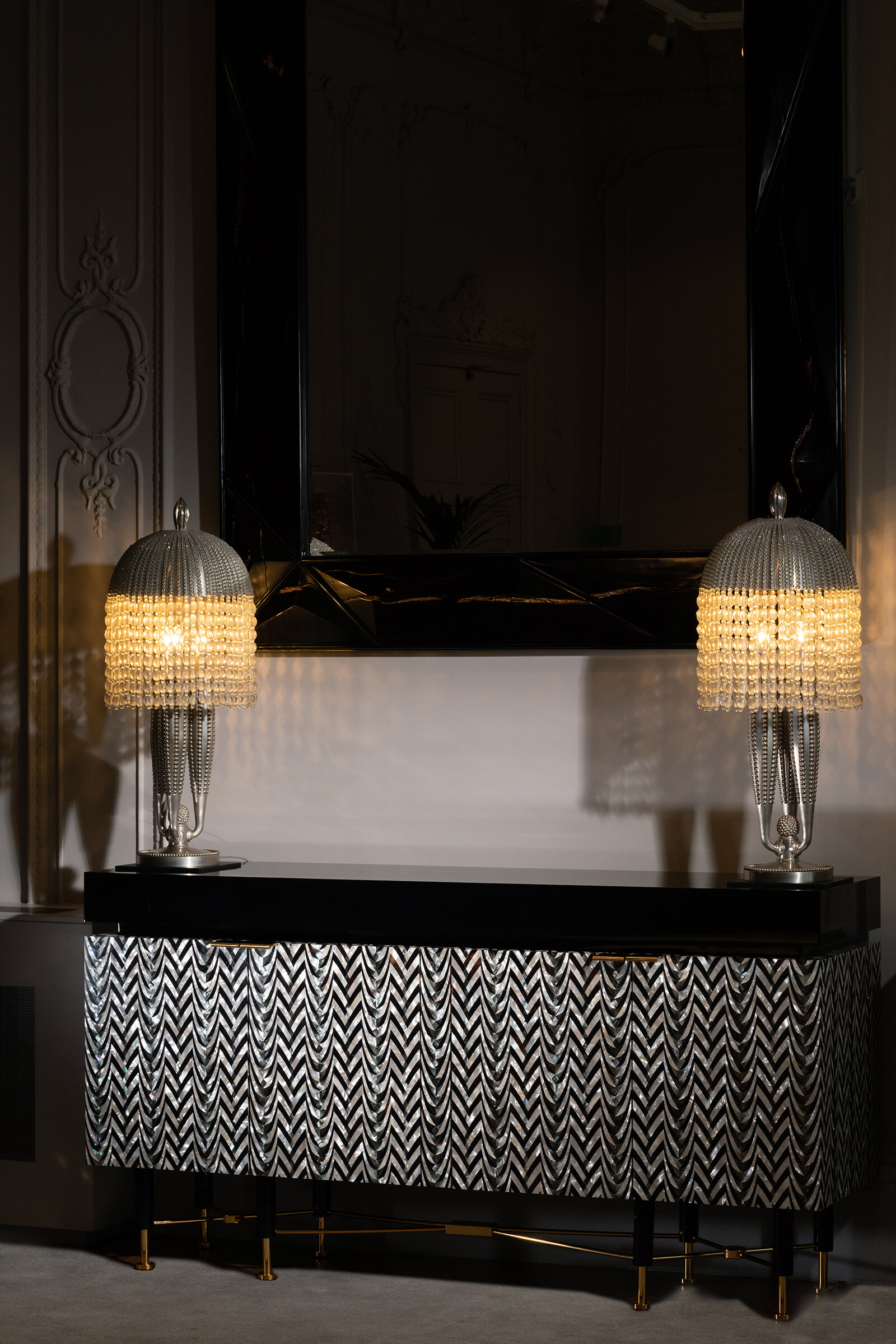
Raro, ‘Coyote’ sideboard, 2016
COURTESY: Raro London
“One master craftsperson may be responsible for a limited-edition piece in its entirety over the five or six months it takes to make”
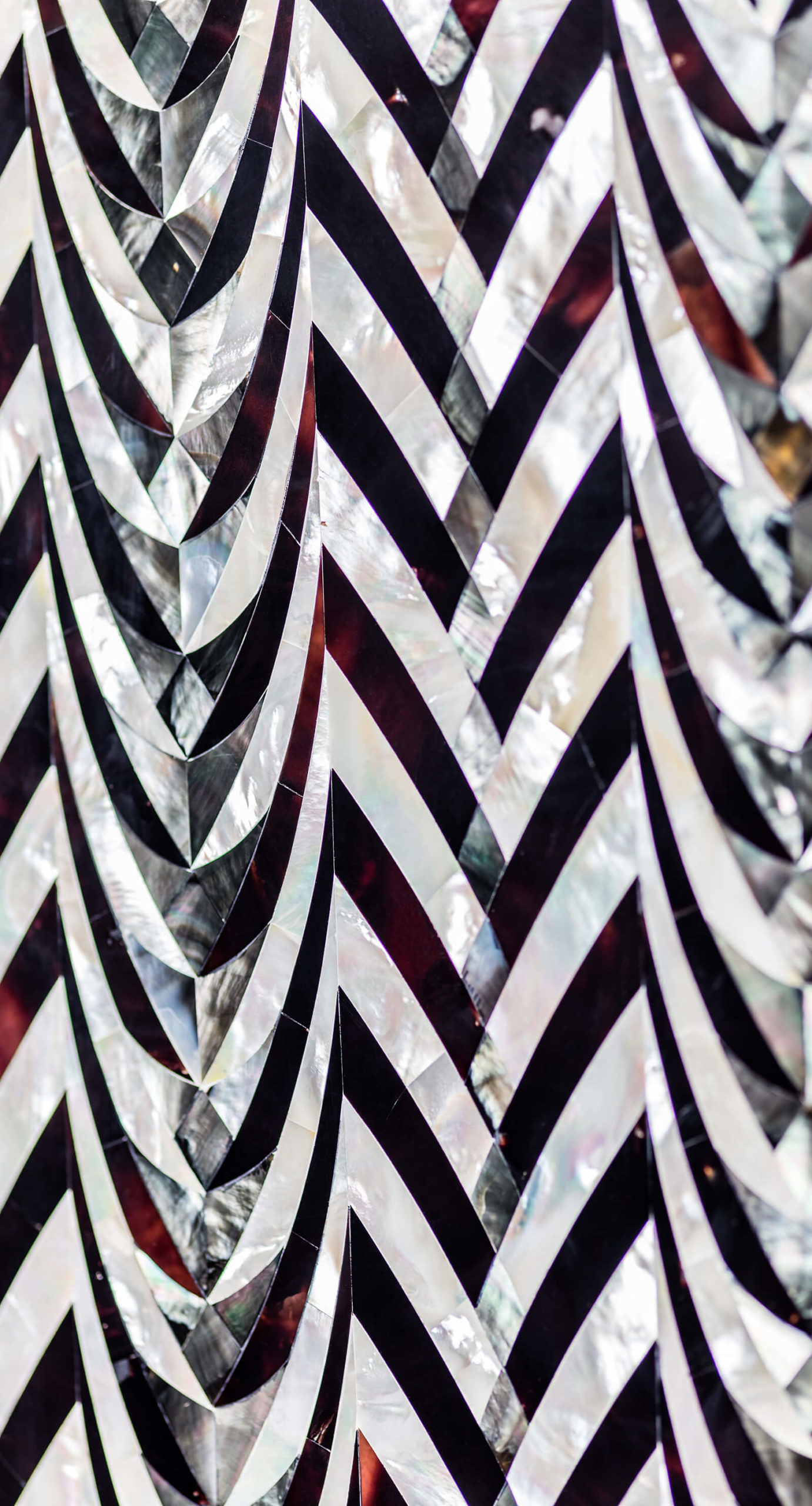
Raro, ‘Coyote’ sideboard, 2016 (detail)
COURTESY: Raro London
“Some designs may require ten to twelve different craft skills to take them from conception to completion”
So intense is the making process that some designs may require ten to twelve different craft skills to take them from conception to completion. These include: intricate wood carving; metalwork in brass, silver or gold; nacre or horn marquetry; gilding, and precious stones set into jewelled detailing. Indeed, one master craftsperson may be responsible for a limited-edition piece in its entirety over the five or six months it takes to make, because the individual sense of artistry required to produce such complex patterns with precision cannot be replicated by another – no matter how skilled.
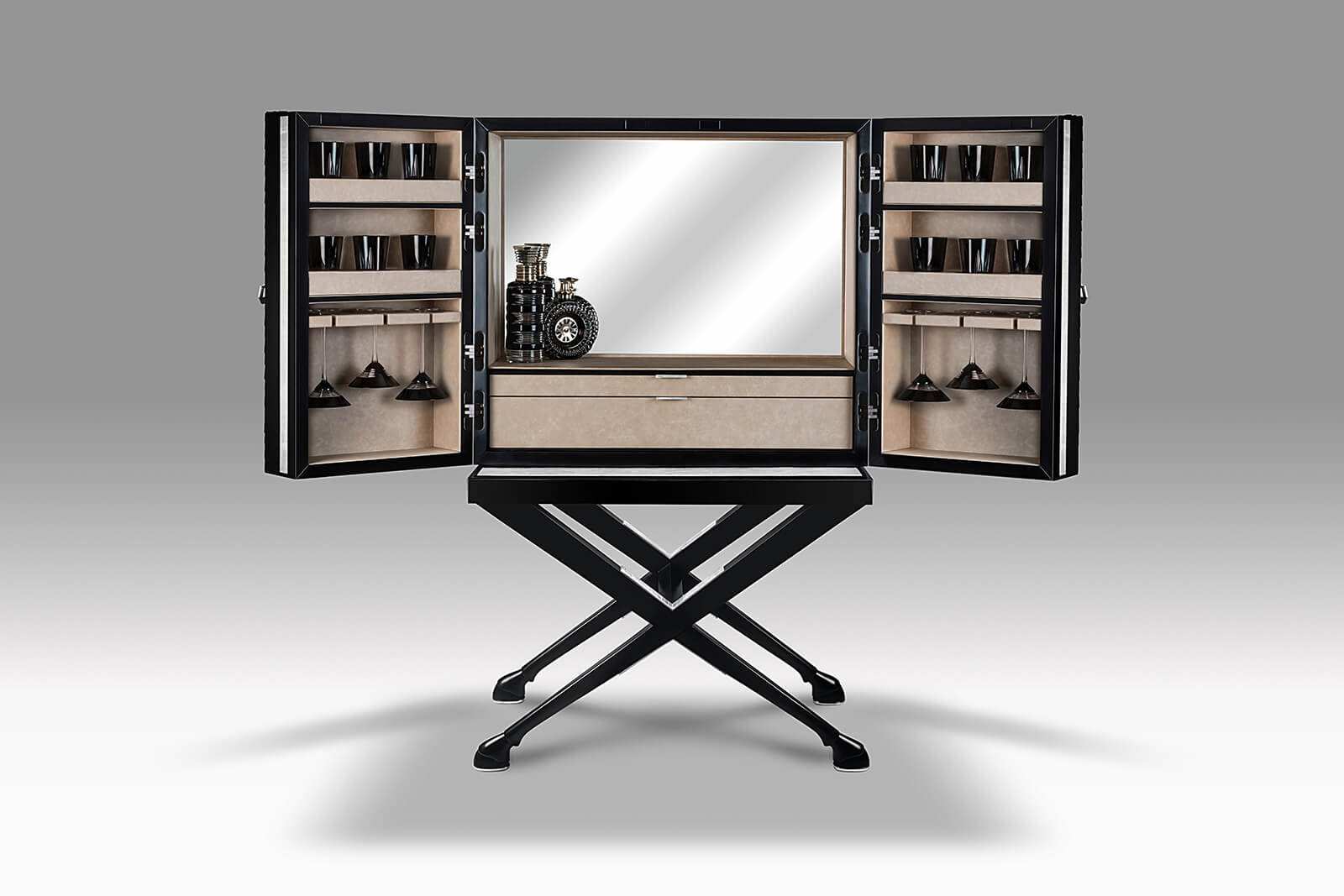
Raro, ‘Swahili’ drinks cabinet, 2011/2018
COURTESY: Raro London
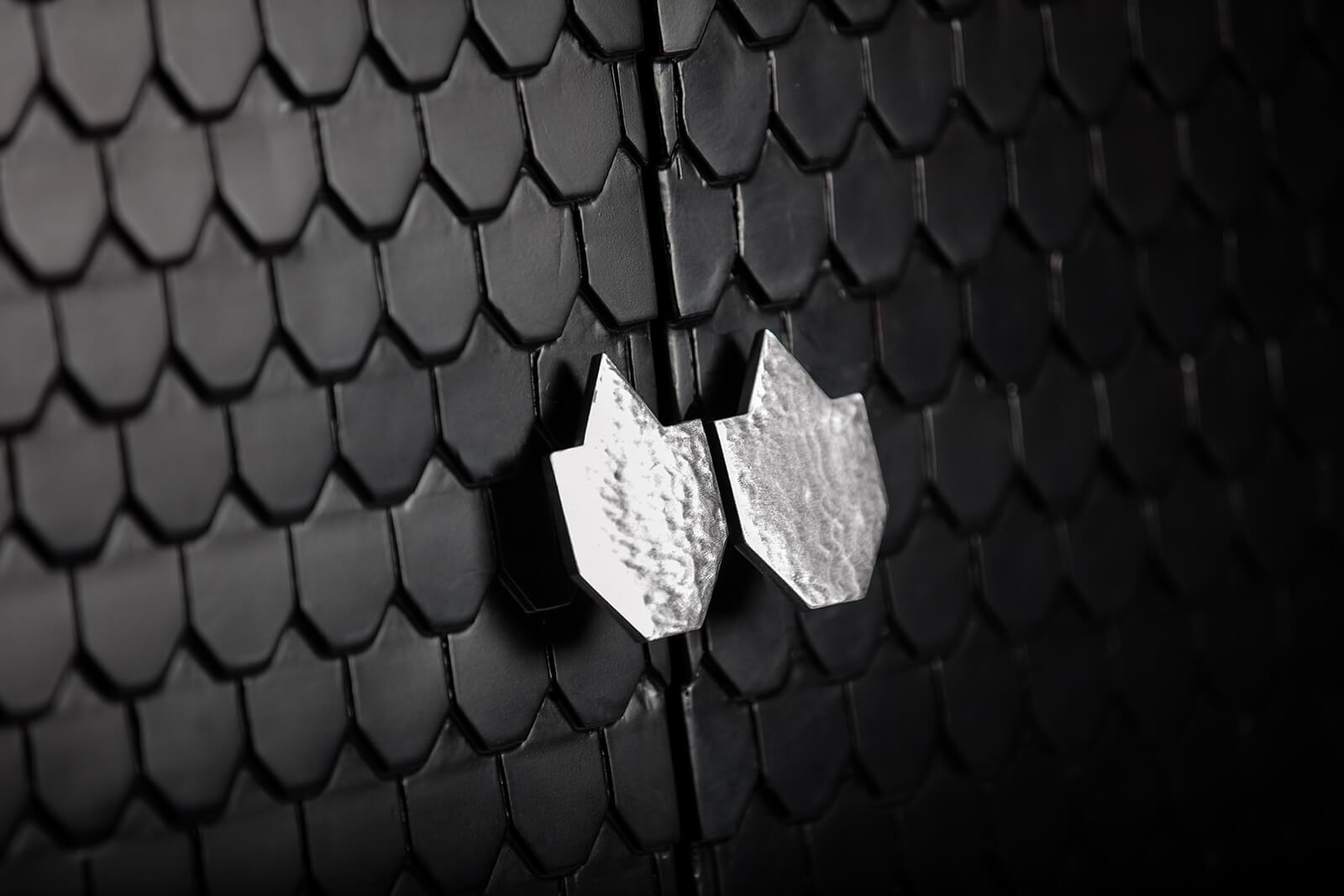
Raro, ‘Swahili’ drinks cabinet, 2011/2018 (detail)
COURTESY: Raro London
Over the years, the Guptas achieved significant success in India with their core collection, but as their creative ambition increased, they became frustrated by the lack of a home-grown audience for their unapologetically luxurious, limited-edition pieces. What makes these stand out is the sisters’ commitment to sourcing the finest materials worldwide, including farmed python and alligator skins from the Americas, bison horn and ebony from Africa, jade from Panjshir mines in Afghanistan, rock crystal from Brazil, couture textiles from Paris and sustainable coral from Sardinia. Their creative palette also features materials for which India is rightly famous, including tropical hardwoods, silver, gold and both precious and semi-precious stones.
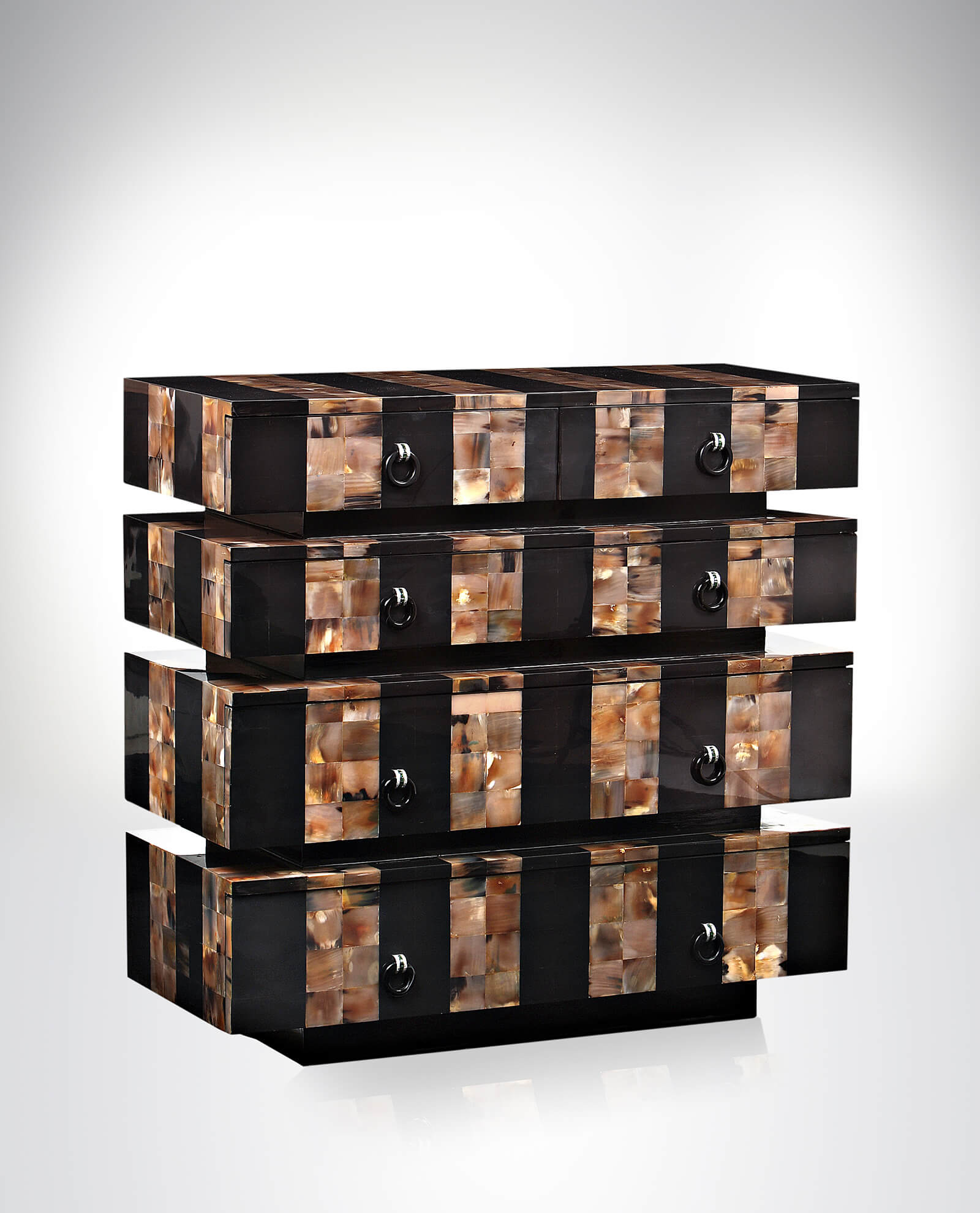
Raro, ‘Alfie Jewelled Bison’ chest of drawers, 2011
COURTESY: Raro London
“Our inspiration has been taken from luminaries such as Carl Fabergé, Louis-François Cartier and Joel Arthur Rosenthal – people who were determined to make no compromises on quality, creativity or the time needed to produce each piece,” says Rolly. “However, in India the collection of design has not evolved to that level and calibre. The Indian elite will spend money on valuable antiques or contemporary fine art, but not on something they perceive to be mere ‘furniture’, so we recognised we had to come to London and seek out the people who see the value in what we do.”
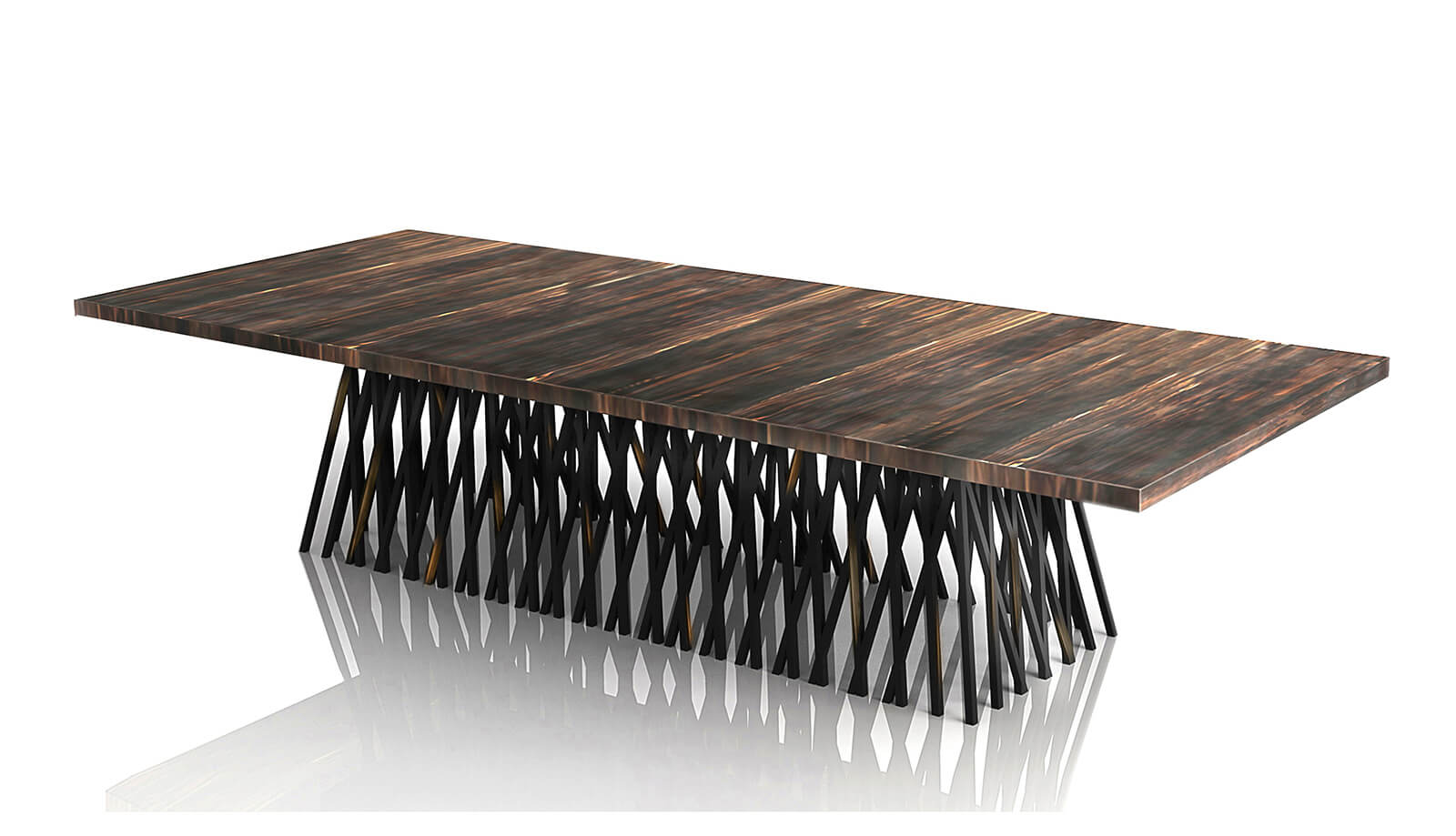
Raro, ‘Random Ziricote’ table, 2016
COURTESY: Raro London
To this end, they opened their atelier a year ago under the name Raro London and are already establishing their reputation amongst blue-chip interior designers and architects, as well as international clients.
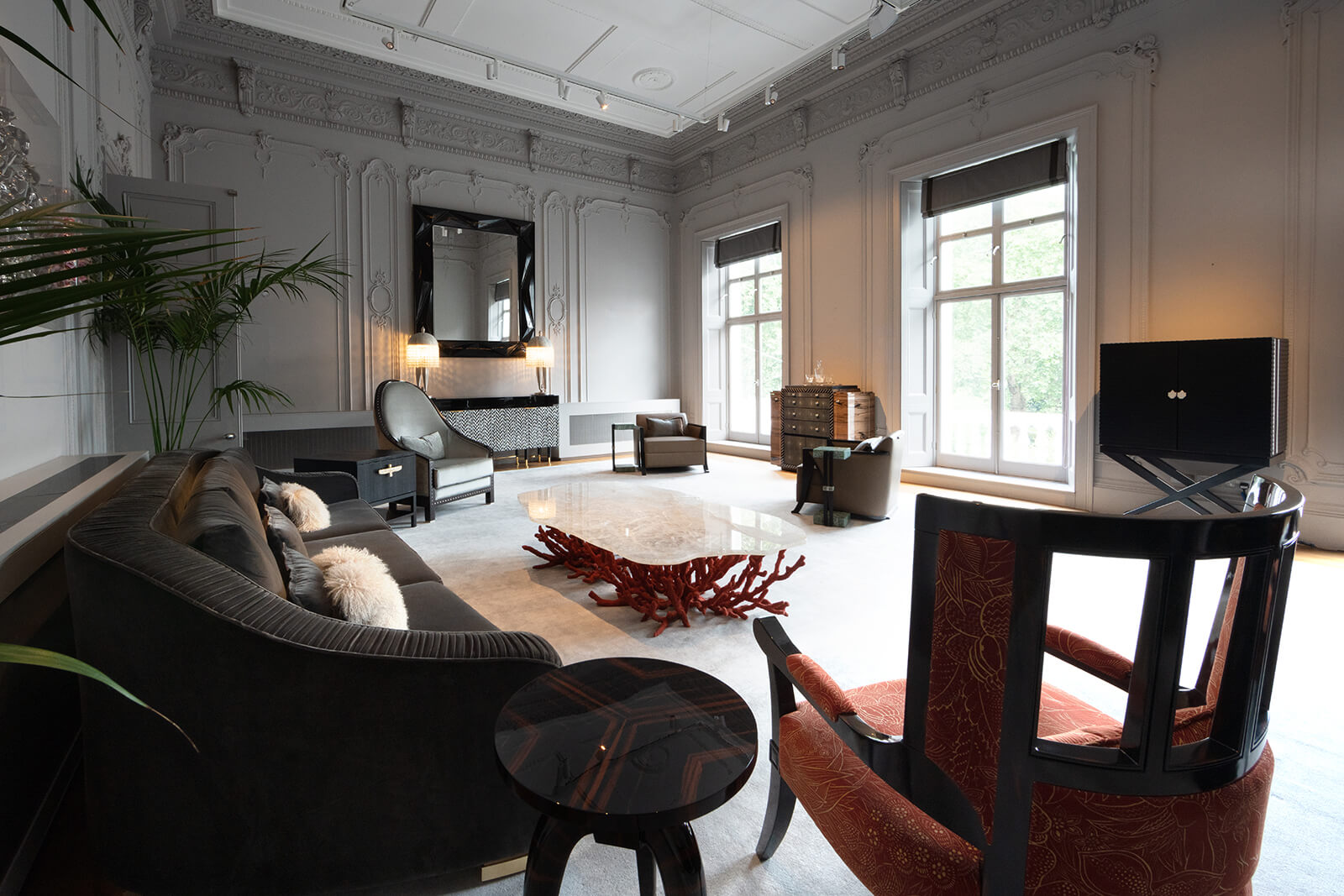
Raro London showroom
COURTESY: Raro London
Rolly and Rajeeta take inspiration from around the world, with pieces that include the ‘Cuba’ armchair in solid ebony with silver sabots and the ‘Coyote’ sideboard in Japanese nacre marquetry with handles and base electroplated in 24ct gold, but there is an undercurrent of exoticism that gives these pieces bravado. While the sisters say the only Indian ingredient in Raro London is them, Raro’s distinctiveness lies in bringing a new aesthetic into the international, collectible design arena.
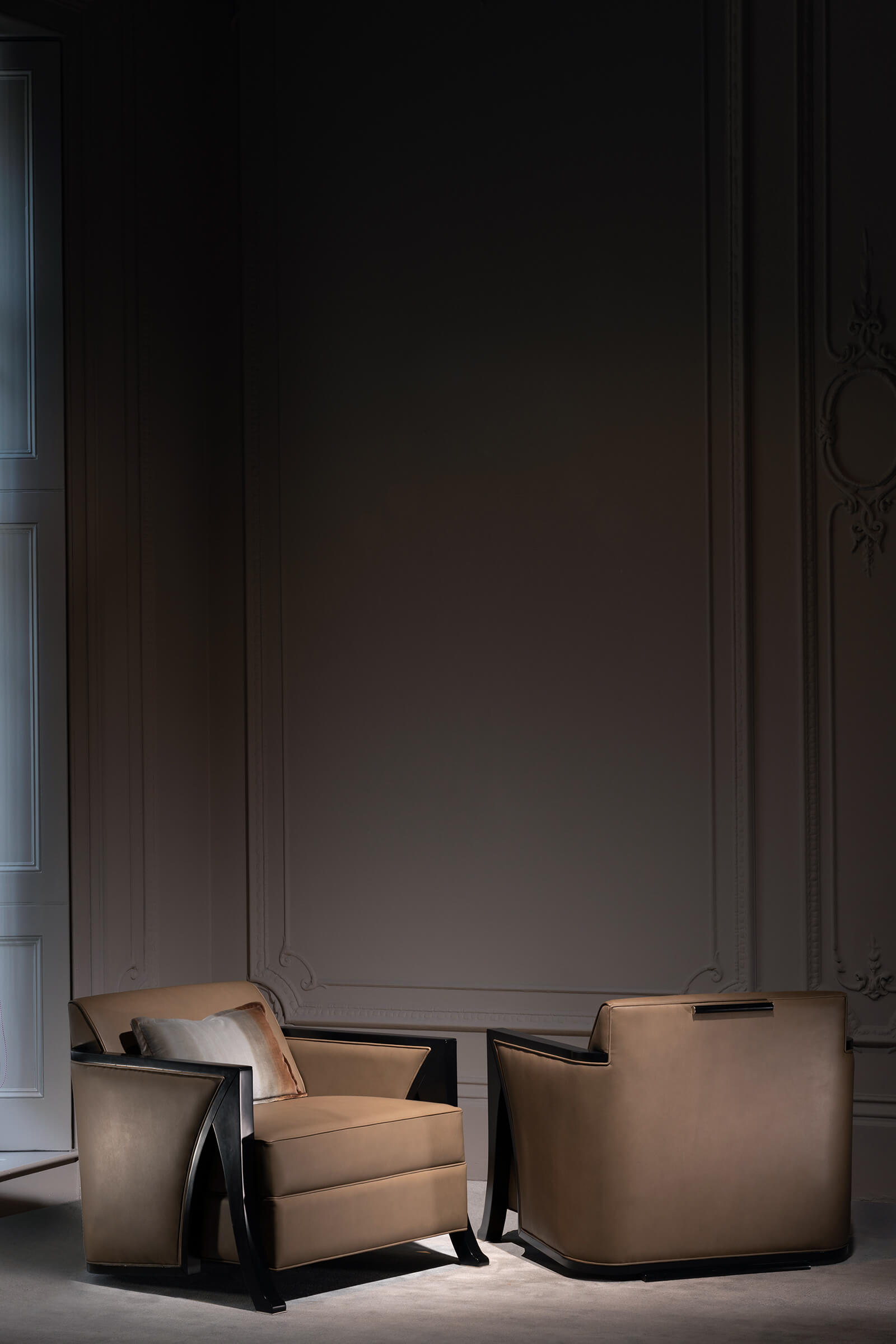
Raro, ‘Cuba’ cigar chairs, 2018
COURTESY: Raro London
The sisters have been coy about using their Indian heritage overtly within their designs until now, but they are currently working on a new collection for 2021 based on Lord Shiva. As Rolly explains, “This project is very close to our hearts. There is a lot of symbolism in Hindu mythology. In our Shiva chair, the three horizontal, ebony wood details mounted on the oval, upholstered back symbolise ‘Tripundra’, the three horizontal lines on the forehead of Lord Shiva. These symbolise both Shiva’s trident and the divine triad of Brahmā, Vishnu, and Shiva. He is also associated with the colour black as this is synonymous with eternity. While we have to be sensitive in referencing anything that concerns our gods and goddesses, we aim to highlight spiritual aspects to which people can relate.”
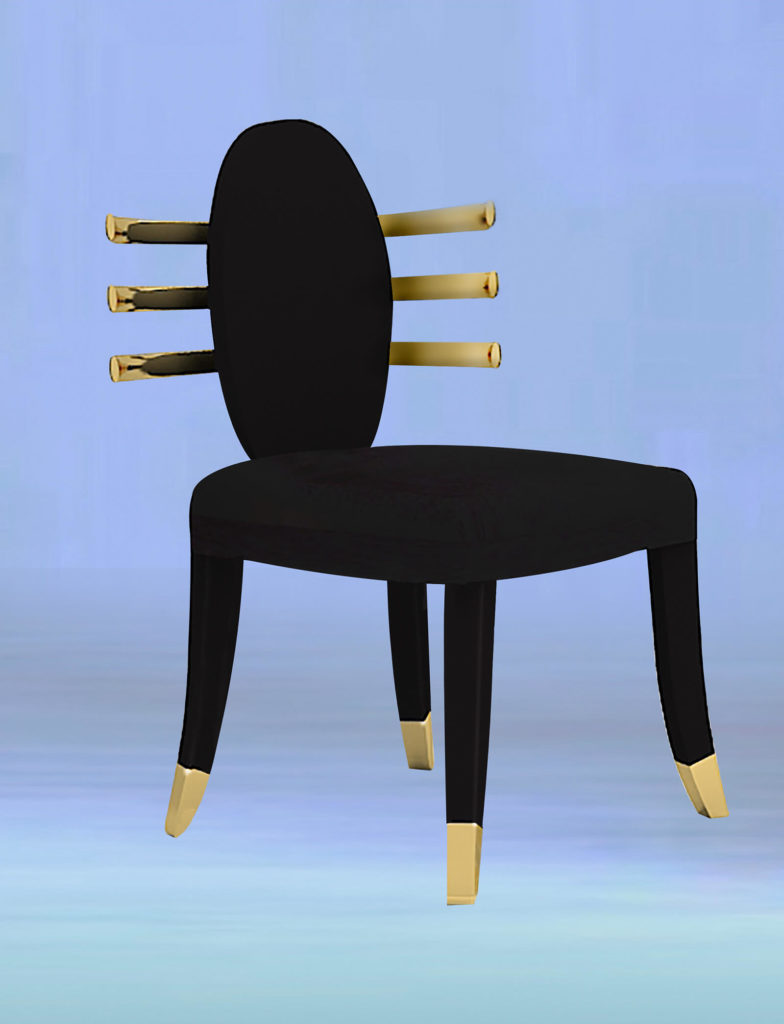
Raro, ‘Shiva’ chair, (to be launched 2021)
COURTESY: Raro London
Prices range from £35,000 – £500,000 plus VAT.
Raro London – bespoke luxury furniture design.
11-12 St James’s Square, London SW1Y 4LB
By appointment only – please call 020 3475 2108 or email jacopo@rarolondon.com





